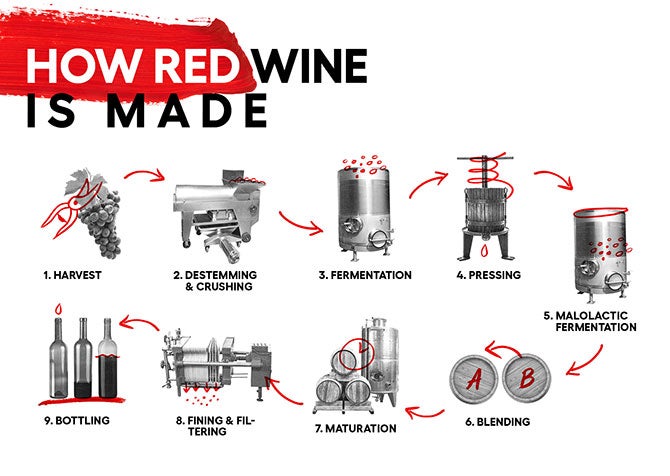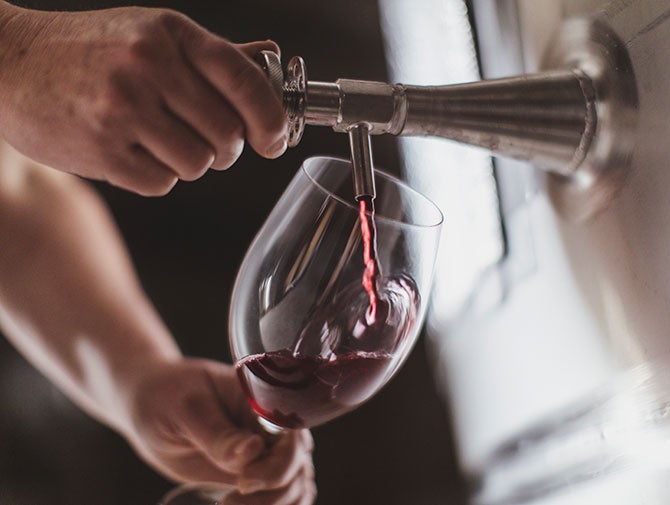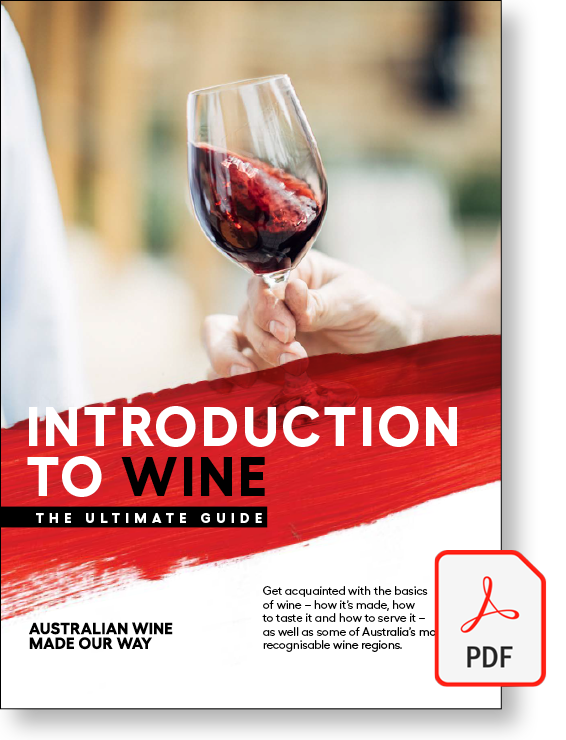The journey from vine to wine
For most winemakers, harvest is the most exciting (and exhausting) time of year. The vineyard and winery come alive, buzzing with people. After 12 months of planning, growing and ripening, the grapes are cut from the vines and brought to the winery.
“I love the energy around vintage – everyone’s excited,” says Charlotte Hardy, an award-winning winemaker who lives on South Australia’s Fleurieu Peninsula and makes wine from the cool and leafy Adelaide Hills.
“You’ve watched these grapes ripen over weeks and weeks... When you finally get them into the winery, your creative mind kicks in and you can visualise what the end product might look like.”
Wine is actually a pretty simple product: in its most basic form it’s just fermented grape juice. But what makes wine so exciting is the potential to influence the winemaking process, elevating this natural process into an artform. So how does a pile of grapes become the bottle of wine at your dinner table? It starts in the vineyard, where factors like temperature, sunshine hours, rainfall and soil all influence the grapes’ flavours.
At the Yarra Valley’s iconic Yarra Yering winery, winemaker Sarah Crowe blurs the line between vineyard and winery. During the growing season, she wanders the vineyard – her border collie pup Willa bounding among the vines – to get a feel for the fruit.
“The most important thing in winemaking is the vineyard,” says Sarah. “If the fruit looks and tastes good, you can make beautiful-tasting wine... As a winemaker I hope to be respectful of the fruit.”
The grapes are harvested by hand or machine, and once they arrive in the winery, the excitement starts for the winemaker.
“We do long hours and hard, hard work, and I love that part of it,” says Charlotte. “But I also try to stop and enjoy it and celebrate it… I think you can pick a wine that’s been made with a bit of love and attention by happy people.”

The 9 key steps to making wine
The exact winemaking process varies depending on the intended wine style, but for the most part, winemakers follow these basic steps.
1. The grapes are harvested
The grapes are harvested by hand or machine.
2. The grapes are crushed
The grapes are usually separated from their stems and leaves before they’re crushed – either by machine or barefoot stomping (yes, that still happens). Some winemakers crush grapes with the stems left on, which can add flavour and texture to some wines, especially reds.
3. The juice is fermented
Fermentation is when yeast turns sugars into alcohol. Red and rosé wines (at this stage just grape juice) are fermented in vats with the grape skins for varying lengths of time. This helps give them colour, flavour and tannin.
Sparkling wines and most white wines are pressed first and fermented without grape skins. White wine is generally fermented at lower temperatures than red wine, to preserve its fresh, fruity flavours. (Sparkling wines are made using an entirely different process – learn more here.)
“There are critical decisions that you make during fermentation,” says Sarah. “The style of your wine is really set up during this stage.”
4. The grapes are pressed
Once red wine has finished fermenting, the grapes are pressed to remove the skins. (White wines are pressed before fermentation.)
5. The wine may be fermented again
Nearly all red wines and some whites undergo a secondary fermentation called ‘malolactic fermentation’. This adds the creaminess, velvety texture and vanilla-type flavours you’ll find in some Chardonnays and in reds like Shiraz and Cabernet Sauvignon.
6. White wines are stabilised
Most white and rosé wines go through cold stabilisation, where the wine is kept at a low temperature for several days to remove tartaric acid. This protects the wine’s quality and flavours.
7. The wine is left to mature
This builds flavour and texture. Wine can be matured in oak or stainless steel, or in traditional vessels like terracotta or concrete. It can be aged for several months or as long as several years, but white wine is typically matured for less time.
8. The wine is fined and filtered
These steps can create a more refined wine. During fining, an agent is added to the wine that binds to sediment and particles, which fall to the bottom ready to be removed. The wine is then passed through a filter to remove particles that make it look cloudy, and organisms that can make it unstable. Some winemakers choose not to fine or filter their wines.
9. At last – the wine is bottled
Most winemakers add sulphites when bottling to help preserve the wine. The bottle is then sealed, either with a screw cap or a cork. And then it’s ready to be poured and enjoyed!
Download the ‘Introduction to wine: the ultimate guide’ and learn all about the basics of wine, including more about how it’s made, how to taste and serve it, and Australia’s top wine styles and regions.






